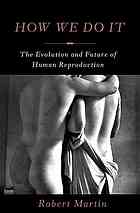
How We Do It
The Evolution and Future of Human Reproduction
- اطلاعات
- نقد و بررسی
- دیدگاه کاربران
نقد و بررسی

April 8, 2013
Martin, an anthropologist and curator at Chicago’s Field Museum, covers every aspect of human reproduction—from fertilization to infant care—in this thoughtful, well-written book. He takes an evolutionary approach throughout, exploring similarities and differences between humans, our primate relatives, and mammals in general, in an attempt to understand the origins of many of our behaviors and physiological patterns, and how these have changed, and continue to change as time goes on. Martin discusses the production of gametes (sperm counts have experienced a significant and shocking decline over the past 50 years), the patterns and purpose of menstruation, the value and cost of breast-feeding, and various mechanisms of contraception, among other interesting topics. His comparative analysis and expertise permits him to draw compelling conclusions, as he does in his examination of the reproductive tracts of mammals: “All evidence combined indicates that the reproductive systems of both men and women are adapted for a one-male mating context with little sperm competition.” But he also raises thought-provoking questions, such as why so many sperm—on the order of 250 billion—are released when only one can inseminate the egg. The only disappointment is that, despite the book’s subtitle, Martin spends less than a single page looking at the “future of human reproduction.” Glossary. Agent: Esmond Harmsworth, Zachary Shuster Harmsworth.

May 15, 2013
Martin, the curator of biological anthropology at the Field Museum in Chicago, examines reproduction from "the basic biology of sperms and eggs up to the complexities of birth control and assisted reproduction." This comprehensive study covers the evolution of reproductive systems at the biological, social and sexual levels. The author begins with the emergence of single-celled organisms (with proper nuclei) more than 1 billion years ago. This was the point of origin of the chromosomes and mitochondria that govern our human genetic systems. Martin searches out correlatives to human social organization, both monogamous and polygamous, in the anatomy and behavior of primate populations. He advocates prolonged breast-feeding and also addresses the roots of monogamy and incest avoidance. He reprises the social history of our understanding of reproduction, which, he surmises, began with the domestication of animals. It was generally recognized at an early point that some form of conjugation between males and females was necessary for reproduction to occur, but the details remained obscure (as witnessed in some primitive populations). The discovery of sex cells awaited the development of microscopes before the actual mechanisms could begin to be determined. Martin examines the process of human fertilization and the several-days lag that can occur between copulation and conception. He reveals surprising studies in which the time of copulation (or insemination) was accurately determined; these studies showed that conception could occur on almost any day of the cycle (before or after ovulation). This may explain the occurrence of some miscarriages and fetal abnormalities--the assumption being that either the sperm or egg was no longer in prime condition--and also accounts for poor estimates of the true length of a pregnancy. A fascinating treatment of a complex subject.
COPYRIGHT(2013) Kirkus Reviews, ALL RIGHTS RESERVED.

June 1, 2013
This fascinating, comprehensive look at human evolution raises important questions about what everything from bottle-fed babies to assisted reproduction means for the future of the species. Martin, curator of biological anthropology at the Field Museum in Chicago and a member of the Committee on Evolutionary Biology at the University of Chicago, explains that he consulted more than 5,000 scientific papers and books to distill the essence of this vast subject. He succeeds in his stated goal to maintain accuracy while writing plain English. (A glossary that defines words such as aspermia, or a complete lack of semen, helps.) And this overview is filled with fascinating facts: it takes a quarter of a billion sperm to fertilize one human egg; apes and monkeys menstruate, but most other mammals don't; regular sauna use can hurt sperm production because of the heat; fat tissue accounts for more than a pound of a typical seven-and-a-half-pound newborn; crib death is more likely in bottle-fed infants; and breast cancer is less common in nursing moms. A must-read for anyone interested in human evolution.(Reprinted with permission of Booklist, copyright 2013, American Library Association.)




دیدگاه کاربران